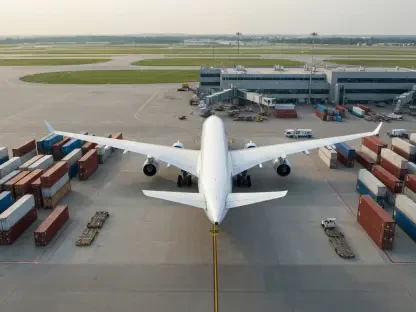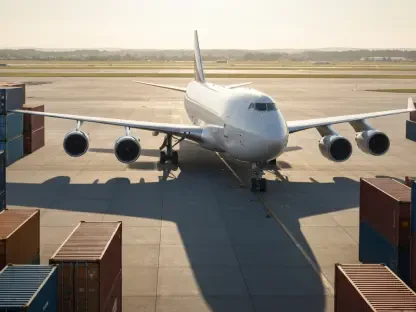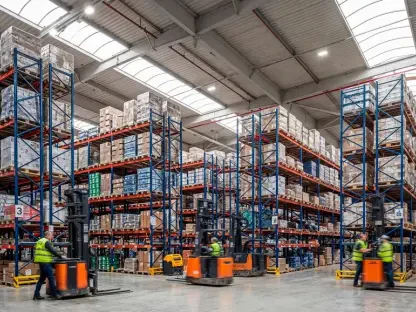The latest edition of the Airports Council International (ACI) World’s World Airport Traffic Dataset offers crucial insights into the dynamic realm of global cargo airport rankings, marking an exhilarating phase in the aviation sector. Highlighting Hong Kong International Airport’s continued dominance in cargo transportation, the dataset unveils significant shifts within the industry, with Dubai Airport’s notable ascent bringing attention to emerging trends that could reshape aviation strategies worldwide.
Detailed Insights Revealed in Global Rankings
Hong Kong International Airport remains unparalleled in its leadership position, benefiting from an impressive 14.1% surge in cargo volumes. This outcome, coupled with the successful implementation of its three-runway operation, has solidified Hong Kong’s capability to manage up to 10 million tons annually, further reinforcing its supremacy in cargo operations. Meanwhile, Shanghai Airport experienced considerable growth, now positioned as the second-leading cargo hub, driven by a 9.8% increase in volumes—a testament to its expanding infrastructure and operational efficiencies.
The debate surrounding Memphis Airport’s decline presents a comprehensive analysis of its slipping cargo capabilities, attributed to a 3.3% reduction in volumes. Conversely, Dubai Airport has shown exceptional progress, swiftly moving from the 17th to 11th position in the rankings due to a remarkable 20.5% growth in cargo handling volumes. This rise emphasizes an enhanced strategic focus on air logistics to capitalize on burgeoning market opportunities. Similarly, Singapore Airport’s leap to the 14th spot illustrates the dynamic shifts unfolding within the industry.
Exploring the Trends and Insights
An engaging workshop format enabled deeper explorations into the factors influencing these rankings changes. Experts deliberated on the correlation between fuel costs, logistics optimizations, and competitive positioning, offering unique perspectives on the intricacies involved. These sessions also highlighted contrasting views on e-commerce effects and maritime route volatility, contributing to augmented demand for air transport as carriers adjust to these evolving circumstances.
Workshops focused not only on operational efficiencies but also embraced future technologies intended to reshape cargo handling capacities. The dynamic interplay between innovative methodologies and audience participation unveiled novel insights toward sustainable growth. Interactive sessions fostered dialogues on emerging management strategies, reflecting the sector’s readiness to adopt progressive changes and novel practices that could redefine operational landscapes in the future.
Innovations Spotlighting Technological Advances
Cutting-edge technological demonstrations and exhibitions captivated attendees’ attention by uncovering developments in cargo handling systems and methodologies. Innovations such as automated logistics systems showcased their transformative potential, prompting industry professionals to reassess practices through their effectiveness in enhancing airport rankings. Product demonstrations served as a platform for engaging dialogues, focusing on real-world applications and the pivotal role of automation in elevating operational capabilities.
The introduction of groundbreaking solutions in airport management displayed the undeniable link between technological advancements and airport rankings. Embracing new cargo handling technologies supports airports in achieving enhanced operational performance, thus driving them up within global rankings. As airports eagerly adopt these innovations, transformative shifts pave the way toward more robust and efficient cargo management strategies.
Charting Future Trajectories in Aviation Rankings
The implications of Hong Kong’s sustained leadership and Dubai’s rising prominence underscore a shift in aviation strategies, shaping aviation landscapes into the future. Reflecting on these ranking dynamics, long-term impacts reverberate through global trade logistics, hinting at potential shifts along major cargo routes and challenging industry norms. As the aviation sector embraces changes, continued emphasis on technological advancements and increased operational efficiencies is expected to lead the charge toward broader modernization.
The evolving trends captured in this dataset signal a promising trajectory in aviation technology and efficiency improvements, hinting at upcoming shifts that may redefine cargo airport rankings yet again. Future considerations invite industry leaders to anticipate technological integration and strategize effectively, striving for sustainable growth and heightened competitiveness amidst complex challenges. These insights highlight the potential for revolutionary changes, fostering industry-wide advancements as new approaches amplify cargo airport capabilities.









